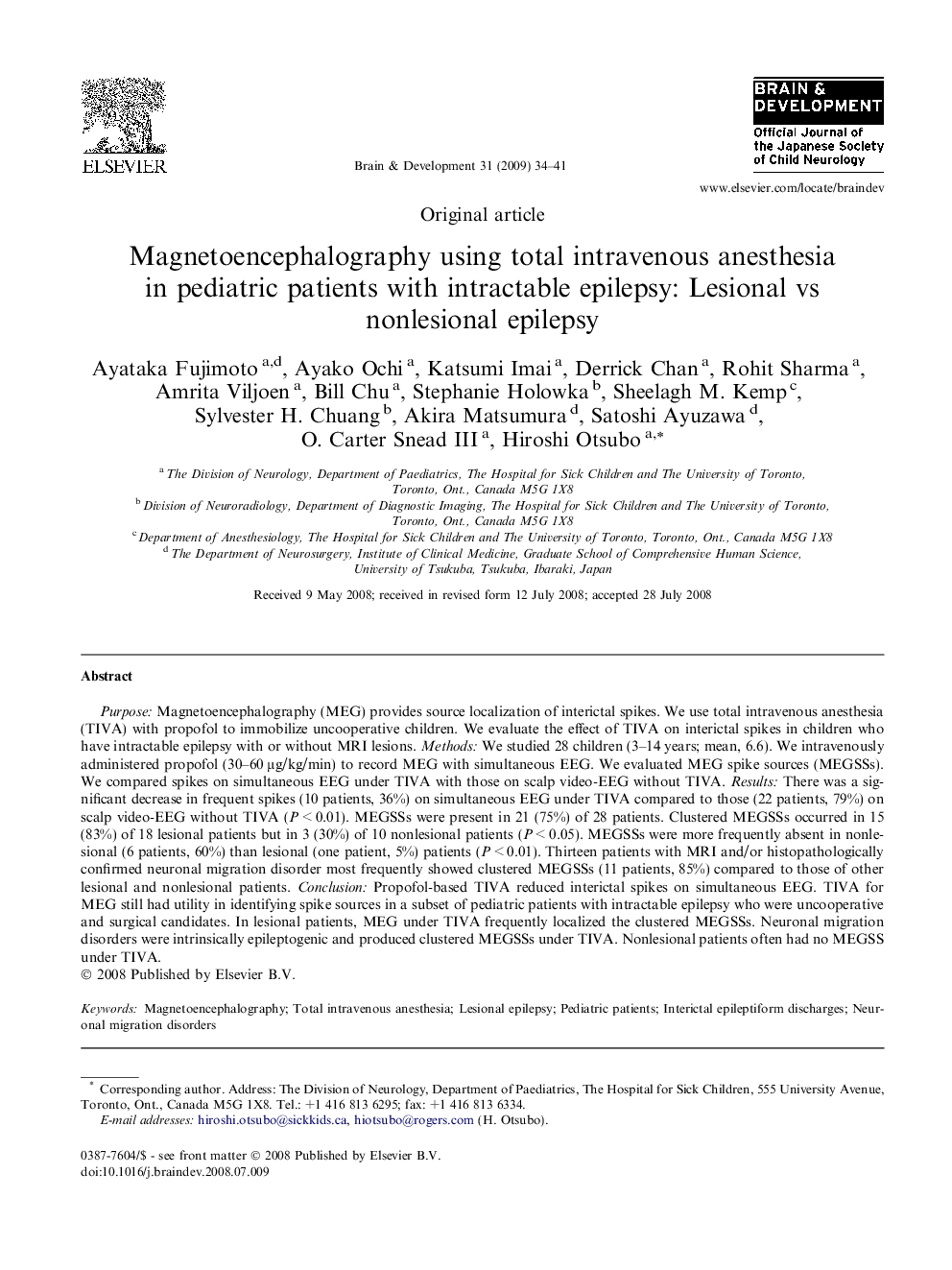| Article ID | Journal | Published Year | Pages | File Type |
|---|---|---|---|---|
| 3038318 | Brain and Development | 2009 | 8 Pages |
Purpose: Magnetoencephalography (MEG) provides source localization of interictal spikes. We use total intravenous anesthesia (TIVA) with propofol to immobilize uncooperative children. We evaluate the effect of TIVA on interictal spikes in children who have intractable epilepsy with or without MRI lesions. Methods: We studied 28 children (3–14 years; mean, 6.6). We intravenously administered propofol (30–60 μg/kg/min) to record MEG with simultaneous EEG. We evaluated MEG spike sources (MEGSSs). We compared spikes on simultaneous EEG under TIVA with those on scalp video-EEG without TIVA. Results: There was a significant decrease in frequent spikes (10 patients, 36%) on simultaneous EEG under TIVA compared to those (22 patients, 79%) on scalp video-EEG without TIVA (P < 0.01). MEGSSs were present in 21 (75%) of 28 patients. Clustered MEGSSs occurred in 15 (83%) of 18 lesional patients but in 3 (30%) of 10 nonlesional patients (P < 0.05). MEGSSs were more frequently absent in nonlesional (6 patients, 60%) than lesional (one patient, 5%) patients (P < 0.01). Thirteen patients with MRI and/or histopathologically confirmed neuronal migration disorder most frequently showed clustered MEGSSs (11 patients, 85%) compared to those of other lesional and nonlesional patients. Conclusion: Propofol-based TIVA reduced interictal spikes on simultaneous EEG. TIVA for MEG still had utility in identifying spike sources in a subset of pediatric patients with intractable epilepsy who were uncooperative and surgical candidates. In lesional patients, MEG under TIVA frequently localized the clustered MEGSSs. Neuronal migration disorders were intrinsically epileptogenic and produced clustered MEGSSs under TIVA. Nonlesional patients often had no MEGSS under TIVA.
